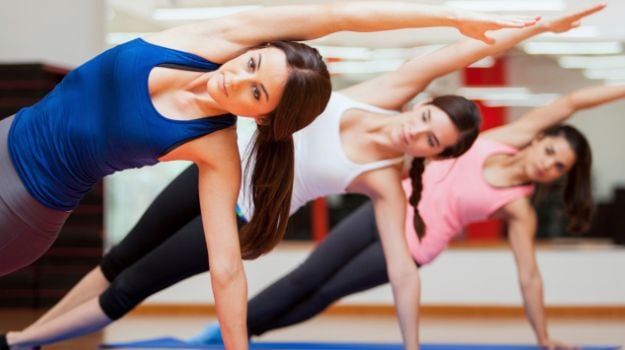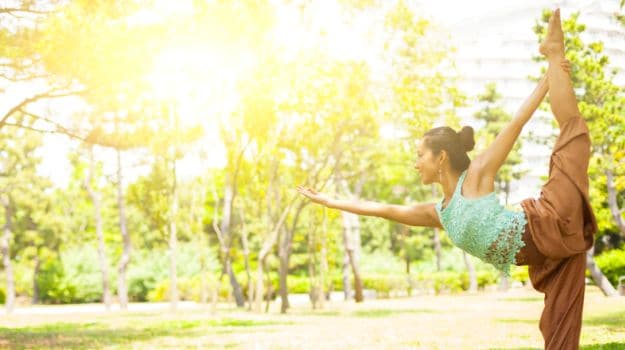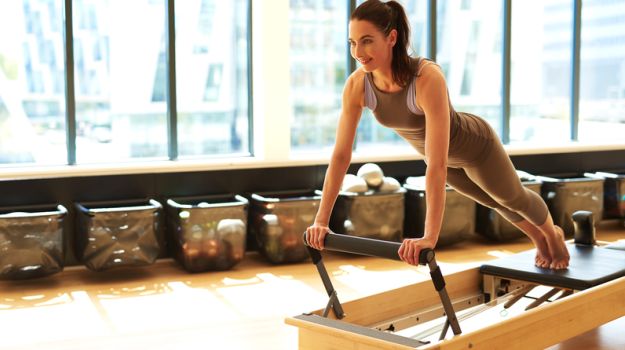What’s The Difference Between Yoga and Pilates?
 Yoga may have a bigger fan following right now, but with celebrity Pilates teachers like Yasmin Karachiwala who trains Bollywood’s best – Pilates, too, is rising in popularity. A question that constantly pops up among fitness newbies is whether they should take Yoga or Pilates. Both improve muscular and postural strength, increase flexibility and reduce stress. So what’s the difference?
Yoga may have a bigger fan following right now, but with celebrity Pilates teachers like Yasmin Karachiwala who trains Bollywood’s best – Pilates, too, is rising in popularity. A question that constantly pops up among fitness newbies is whether they should take Yoga or Pilates. Both improve muscular and postural strength, increase flexibility and reduce stress. So what’s the difference?
Yoga vs Pilates: The Breakdown
1. According to Vesna Pericevic Jacob of Vesna’s Wellness, “The main difference between Pilates and Yoga is in the core essence of the two. Yoga focuses more on relaxation, meditation and reaching a state of nirvana, while Pilates places more emphasis on the core and balance, achieving greater awareness about your body”.
2. In yoga, the primary goal is to stay connected to the breath. But in Pilates, the first order of business is the precision of movement and then the coordination of that movement with breathing.
3. Yoga is a “practice”, whereas Pilates is known as a “workout”.
4. The breathing patterns in both Yoga and Pilates are different. For the bulk of the asana practice, yogic breathing is either ujjayi (a smooth, heat-inducing breath) or kapalabhati (a rapid breath that creates greater internal heat). In Pilates however, the breath for most exercises is a slow, controlled diaphragmatic breath but few exercises use a rapid breath similar to kapalabhati breathing in Yoga.

5. In terms of pace, yoga is considerably more static than Pilates. “Yoga is stagnant and Pilates is dynamic. Yoga is more about holding a posture (asana) for a number of breaths and the practice focuses on how to reach your ideal self. While Pilates urges you to focus on your body, your breath and how they move together, letting your body movement flow from one exercise to another”, says Dr. Namita Agarwal, Fitness Fusion.
6. The practice of Yoga originated in India more than 5000 years ago and has evolved over the centuries and cultures. Pilates is a much younger practice that was actually inspired by Yoga, and originated in the mid-20th century by Joseph Pilates. He created the exercises as a form of rehabilitation and strengthening, and referred to it as “Contrology” (the study of control).
7. Both Yoga and Pilates bring an understanding that the mind and body are connected. However, Yoga adds an additional element to the mix – the spirit – and the purpose is to unite the mind, body and spirit.
8. Dr. Namita Agarwal, Fitness Fusion says, “Yoga doesn’t require any equipment. But in addition to the mat, Pilates can also be done using special equipment such as the Reformer, Cadillac and the Wunda Chair”. These machines use heavy springs to create resistance and are incredibly versatile, taking mat work to a different level. They can provide support to make exercises easier, or add resistance to challenge the muscles even more.

9. “Unlike Yoga where each exercise focuses on a single body part, Pilates works out the entire body”, adds Vesna Pericevic Jacob of Vesna’s Wellness. Pilates mainly targets the core, the upper legs to help engage the core and the glutes to stabilize the core.
10. Uday Pratap, Trainer at The Pilates Studio puts it simply, “Pilates is about body balance and Yoga is about inner self”.
The good news is that you don’t have to choose between the two. A lot of people practice both Yoga and Pilates to get just the right balance of benefits. Sanaa Vidyalankar, Founder of Sole to Soul, Delhi instructs a PIYO (Pilates and Yoga) class at the studio. Why choose Yoga or Pilates when you can have the benefit of both? According to Sanaa, “PIYO is flexibility and strength rolled into one powerfully dynamic workout. Yes you become flexible, but you also become so much stronger”!




